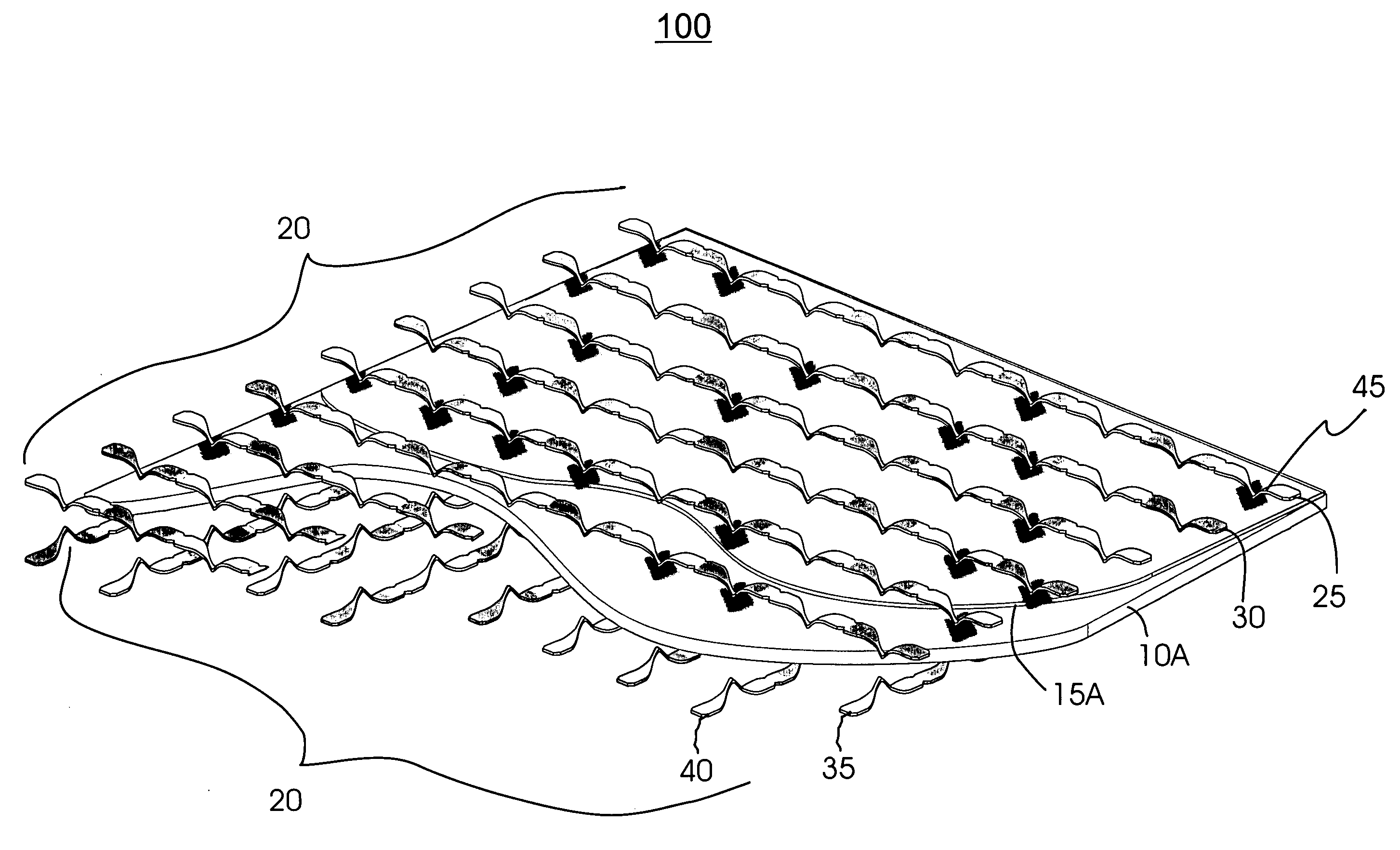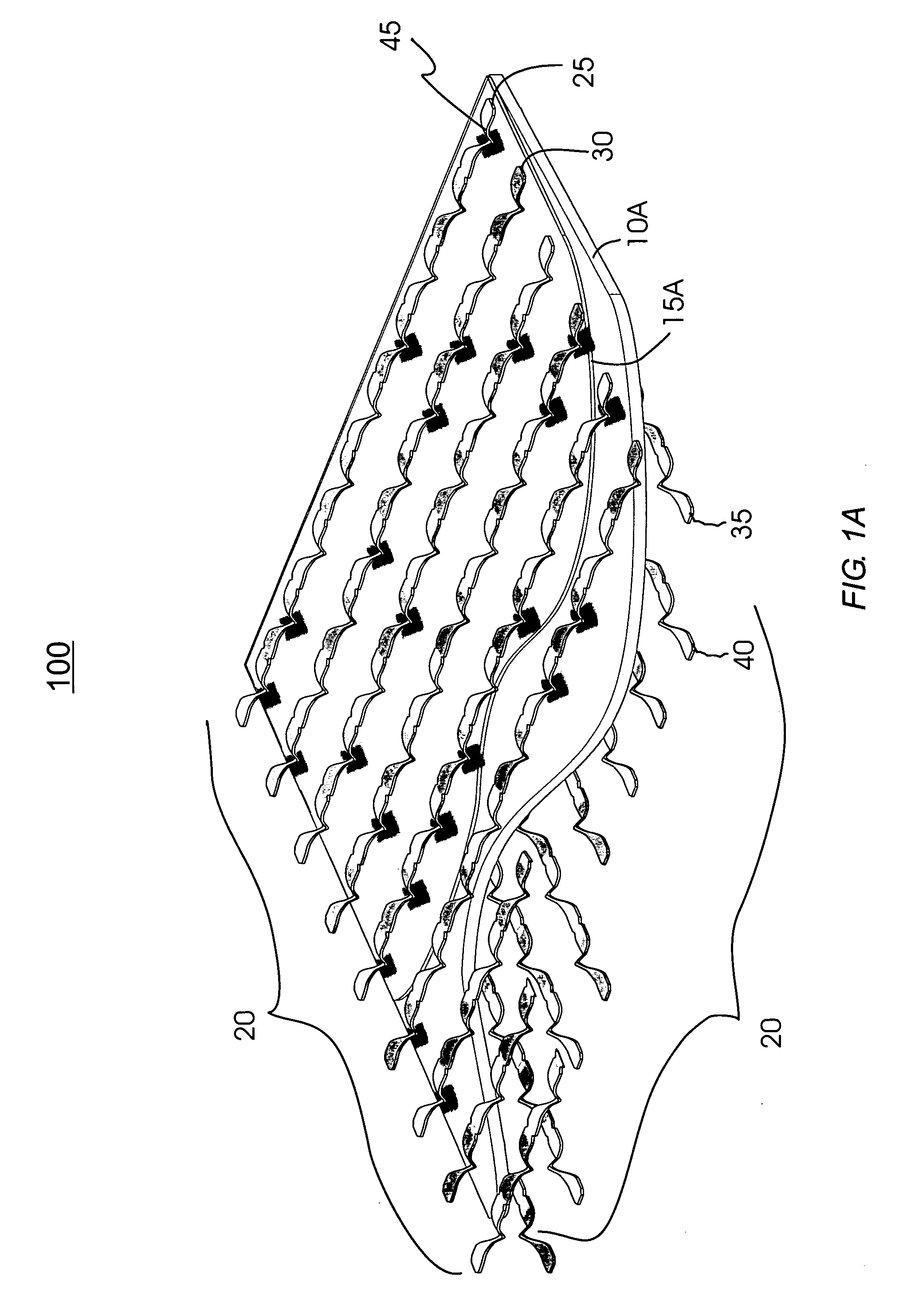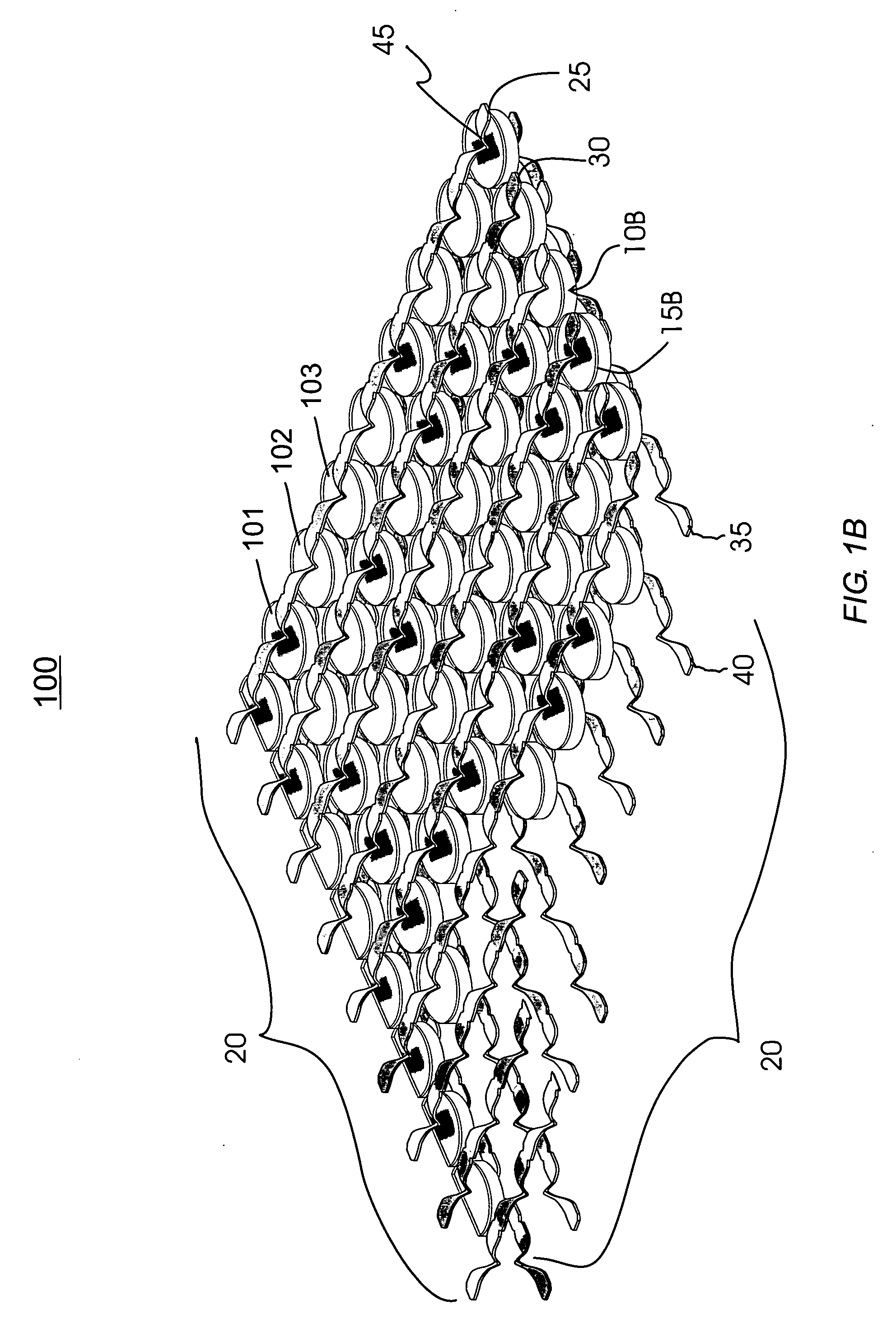System and method for storing data in an unpatterned, continuous magnetic layer
a magnetic layer and data technology, applied in the field of memory storage systems, can solve the problems of large changes in the magnitude of field required for writing individual devices, the mtj elements are scalded to very small sizes, and the switching fields of these elements become ever more sensitive to the detailed structure of the edges of these devices, so as to achieve higher local magnetic fields and higher densities.
- Summary
- Abstract
- Description
- Claims
- Application Information
AI Technical Summary
Benefits of technology
Problems solved by technology
Method used
Image
Examples
Embodiment Construction
[0045] Conventional MRAM architectures involve the use of discrete magnetic memory elements with a particular shape and size that are lithographically patterned by, for example, conventional optical and / or electron beam lithography and etching. Typically, these memory elements are fabricated on top of micro-electronic components, such as transistors and capacitors, which form circuits which are used for the purposes of reading, writing and interrogating the magnetic memory elements.
[0046] These components are formed first, typically on silicon wafers, and then the magnetic memory elements are fabricated, usually by first depositing a continuous film across the wafer which comprises the magnetic memory element. The film is then lithographically patterned into magnetic memory devices of a particular and well defined shape and size which are aligned very precisely with wires or vias which connect these elements to the underlying electronic components.
[0047] Finally, vias and wires ar...
PUM
 Login to View More
Login to View More Abstract
Description
Claims
Application Information
 Login to View More
Login to View More - R&D
- Intellectual Property
- Life Sciences
- Materials
- Tech Scout
- Unparalleled Data Quality
- Higher Quality Content
- 60% Fewer Hallucinations
Browse by: Latest US Patents, China's latest patents, Technical Efficacy Thesaurus, Application Domain, Technology Topic, Popular Technical Reports.
© 2025 PatSnap. All rights reserved.Legal|Privacy policy|Modern Slavery Act Transparency Statement|Sitemap|About US| Contact US: help@patsnap.com



